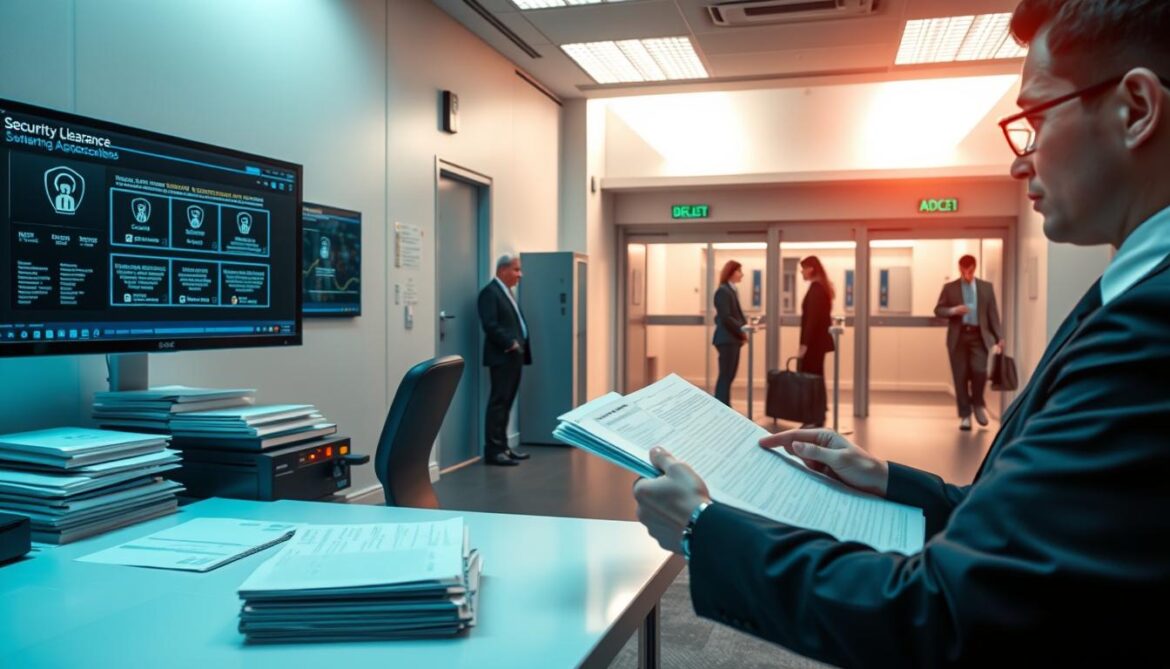Did you know over 100,000 positions across federal departments and private contractors require access to sensitive data? This vetting process isn’t just paperwork—it’s your gateway to roles shaping national infrastructure, defense projects, and confidential policy work.
Security clearances verify trustworthiness to handle classified materials. Three tiers exist: Reliability Status for basic protected information, Secret for higher-risk data, and Top Secret for the most critical assets. Each level involves deeper background checks, financial reviews, and reference interviews.
Your eligibility depends on legal compliance and clean criminal records. Even minor past offenses could delay approvals, though transparency often helps resolve issues. The government prioritizes both individual accountability and systemic safeguards to protect shared resources.
Maintaining clearance requires ongoing adherence to protocols. Careers in defense, tech, or public administration often demand this credential for promotions or project access. Think of it as a career passport—expiring without renewal limits your professional mobility.
Understanding these requirements helps you navigate opportunities in protected work environments. Let’s explore how to prepare for the vetting steps ahead.
Understanding the Basics of Canadian Security Clearance
Gaining access to sensitive roles requires authorization through standardized vetting. This process determines if you can handle protected materials without risking national interests. Let’s break down how it works.
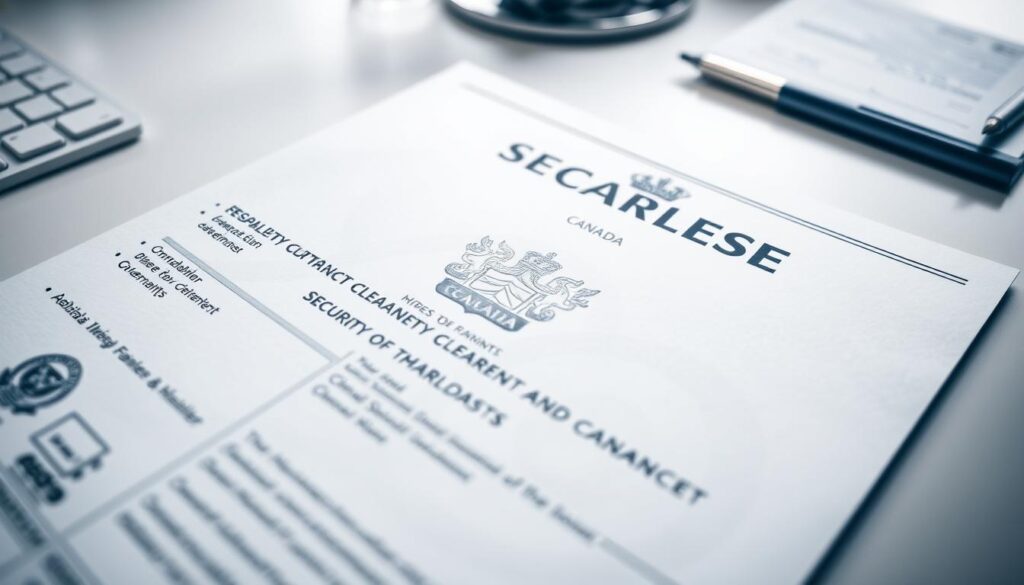
What Authorization Means
A security clearance confirms your trustworthiness after thorough checks. It’s not just about past behavior—it assesses risks you might pose in future assignments. These approvals let organizations share classified data knowing it’s protected.
Who Qualifies and How
Eligibility starts with citizenship or permanent residency. You’ll need a clean legal history and consistent residency records. Sponsorship matters too—only registered companies with certified officers can submit requests.
| Document Type | Examples |
|---|---|
| Foundational ID | Birth certificate, citizenship card |
| Supporting ID | Driver’s license, government-issued photo ID |
Company Security Officers verify your identity using two documents. One must have a photo. Missing paperwork? Delays happen—prepare early. Once approved, you’re responsible for reporting life changes affecting your status.
Navigating the Security Screening Process in Canada
Your journey through the screening process starts with layered verifications. Organizations must confirm your identity and history before granting access to protected data. Here’s what happens behind the scenes.
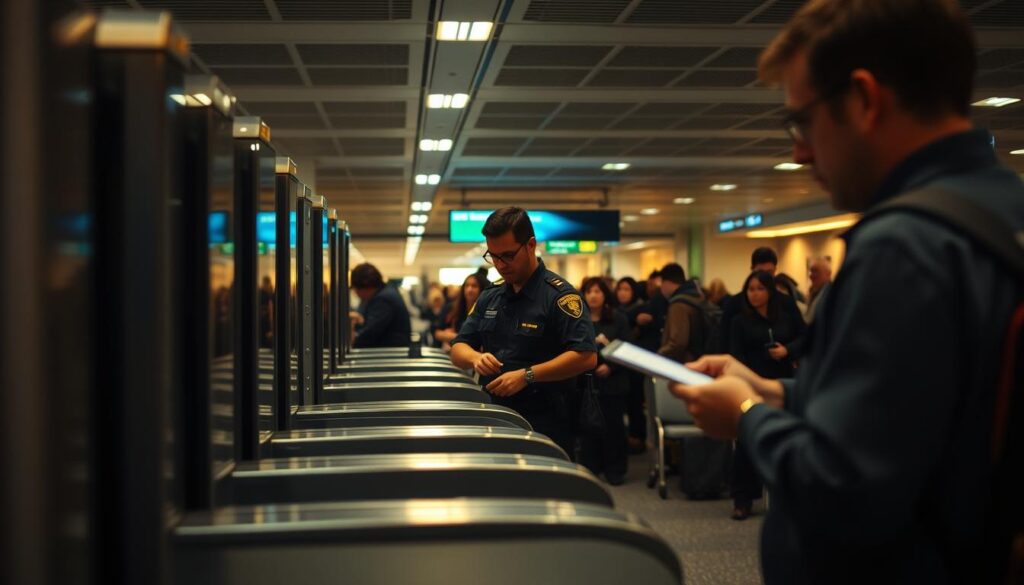
Conducting Background Checks and Verifications
First, expect electronic fingerprinting through law enforcement. This mandatory step reveals criminal records or pending charges. Financial responsibility matters too—credit bureaus assess debts or vulnerabilities that might risk your reliability.
Next, agencies run indices searches to confirm loyalty. These reviews examine foreign ties or activities conflicting with national interests. If you’ve lived abroad for six months or more, prepare for extended out-of-country verifications.
Gathering Necessary Documentation
You’ll need two types of ID: foundational proof (like birth certificates) and supporting evidence (like driver’s licenses). Missing documents? Delays are common—organize files early.
| Document Category | Required Examples |
|---|---|
| Core Identification | Citizenship certificate, passport |
| Supplementary Proof | Health card, utility bills |
Interviews may follow to clarify gaps in your history. Answer truthfully—inconsistencies raise flags. This transparency-first approach helps evaluators confirm your readiness for sensitive roles.
Step-by-Step Guide to Applying for Canadian Security Clearance
Navigating the application procedure requires attention to detail from start to finish. Missing documents or incomplete forms rank among the top reasons for delays. Let’s simplify each phase.
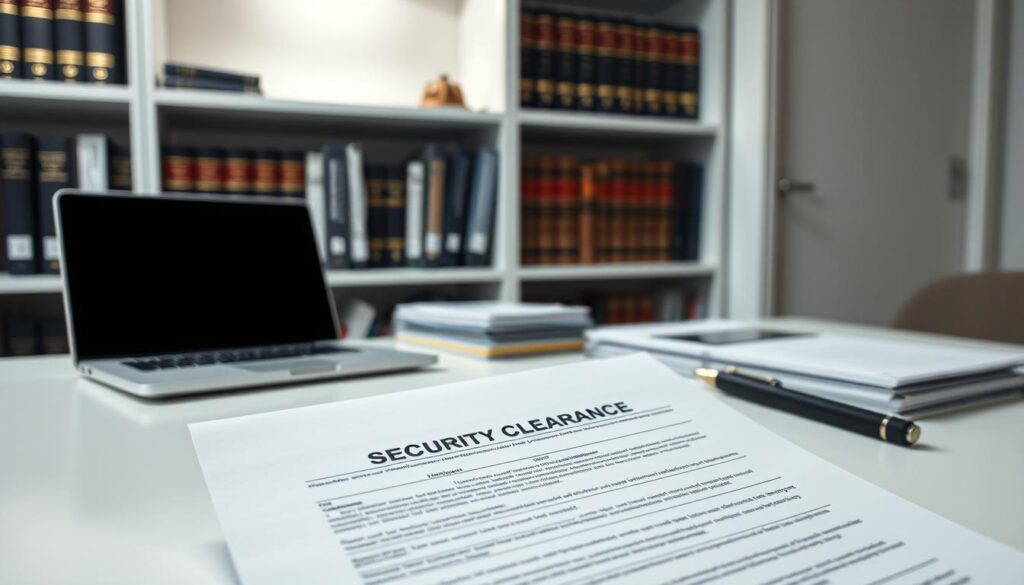
Preparing Your Application Materials
Start by gathering foundational documents like birth certificates and passports. Your Company Security Officer (CSO) will verify these alongside supplementary proofs like utility bills. Pro tip: Create a checklist matching your clearance level’s requirements.
Complete every section of the security form truthfully. Employment gaps or foreign travel details need precise dates. Even minor discrepancies trigger additional reviews. Work closely with your CSO to ensure sponsorship aligns with registered organizational protocols.
Submitting and Following Up on Your Application
Once submitted through the Contract Security Program, processing begins. Simple requests—those with straightforward histories—often take weeks. Complex cases involving overseas residencies or financial irregularities may extend to months.
| Request Type | Average Timeline | Common Factors |
|---|---|---|
| Simple | 4-6 weeks | Local residency, clean records |
| Complex | 12+ weeks | Foreign ties, credit issues |
Monitor your email for status updates. Screening agencies might request clarifications—respond promptly with verified information. Your CSO becomes your liaison during this phase, helping resolve bottlenecks efficiently.
Understanding Different Types of Federal Security Screenings
Federal roles handling sensitive data require specific authorization tiers. Three distinct security screenings determine what you can access—each with escalating requirements. Let’s break down how these types differ in scope and application.
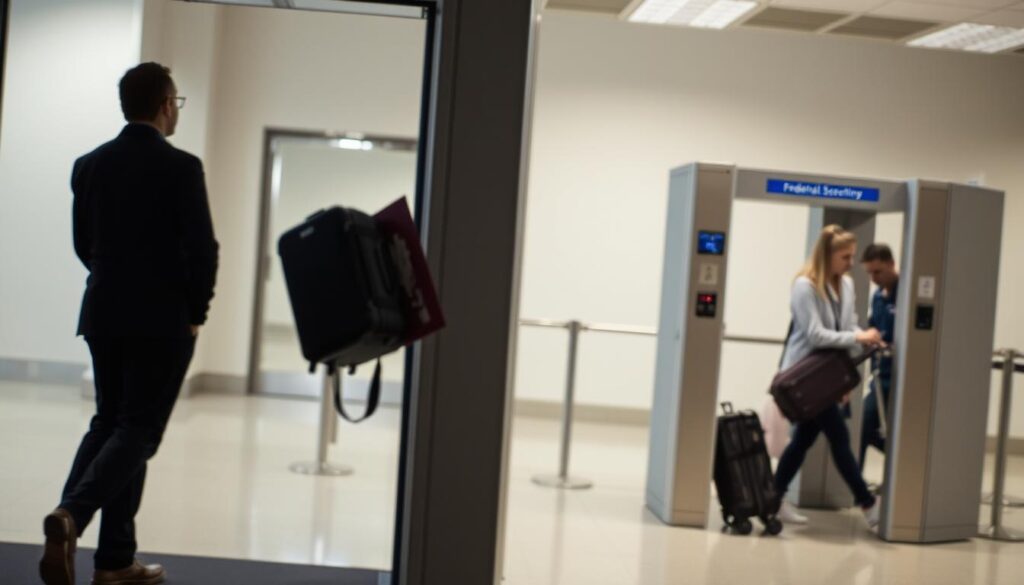
Reliability Status and Its Role
Reliability Status serves as the entry point for protected information. It grants access to documents labeled Protected A, B, or C. Basic checks verify your identity, employment history, and criminal record. This screening lasts 10 years and suits roles like administrative support or facility access.
Minor legal issues may not disqualify you if resolved transparently. However, ongoing charges or financial fraud could delay approval. Sponsorship from authorized employers is mandatory—you can’t apply independently.
Secret and Top Secret Clearance Procedures
Secret authorization digs deeper. Expect enhanced background checks covering foreign contacts and credit history. This level unlocks classified data labeled Secret, valid for a decade. Roles in defense contracts or intelligence often require it.
Top Secret involves the most rigorous process. Investigators interview references and verify decades of personal history. It’s mandatory for accessing NATO or COSMIC materials, with renewals every five years. Recent bankruptcies or undisclosed overseas ties often trigger rejections.
| Level | Validity | Key Requirements |
|---|---|---|
| Reliability | 10 years | Basic criminal check, employment history |
| Secret | 10 years | Credit review, foreign contact disclosure |
| Top Secret | 5 years | Extended interviews, international vetting |
Important Considerations: Renewal and Clearance Duplication
Maintaining your authorization requires proactive planning beyond the initial approval. Whether you handle protected data or manage critical infrastructure, staying ahead of expiration dates ensures uninterrupted access to sensitive roles.

Renewal Process and Timing
Mark your calendar: you can restart vetting procedures six months before your current authorization lapses. Early action prevents gaps—even if processing extends past the expiry date, the Personnel Security Program often considers your status valid during reviews.
Delays occur if legal changes emerge. New criminal charges or unresolved financial disputes must be reported immediately. Most renewals take weeks, but complex cases with overseas ties or credit issues may stretch to months.
Benefits of Duplicating Your Clearance
Authorization ties to your employer, not you. When switching jobs, duplication transfers your verified status to new organizations. This avoids restarting the entire screening process—saving time and preserving access to classified projects.
To duplicate, your new employer submits a request through certified channels. Approval maintains your eligibility indefinitely, provided no red flags arise. It’s a career safeguard for professionals in defense, tech, or policy roles requiring continuous access.
Best Practices for a Successful Security Screening
Want to avoid delays in your vetting process? Success starts with meticulous preparation and attention to detail. Let’s explore how to streamline your application while meeting strict requirements.
Tips for Smooth Verification and Documentation
Begin by collecting every document upfront—the online form won’t let you save progress. For basic screenings, gather five years of address history without date gaps. Higher-level checks demand a decade of residential details, plus employment and education records.
Travel outside Canada for six months or more? Note exact dates and locations. Extended international stays trigger deeper verifications, potentially adding months to processing times. Keep digital copies of visas or residency permits handy.
Anticipate lengthy waits for complex cases—some take years. Use this time to update expired documents or resolve credit issues. Never guess about past information. Incomplete answers flag your application for manual reviews.
Honesty remains non-negotiable. Disclose even minor legal matters upfront. Screening teams prioritize transparency over spotless histories. By organizing timelines and proof early, you’ll navigate checks efficiently—and unlock protected career paths faster.

